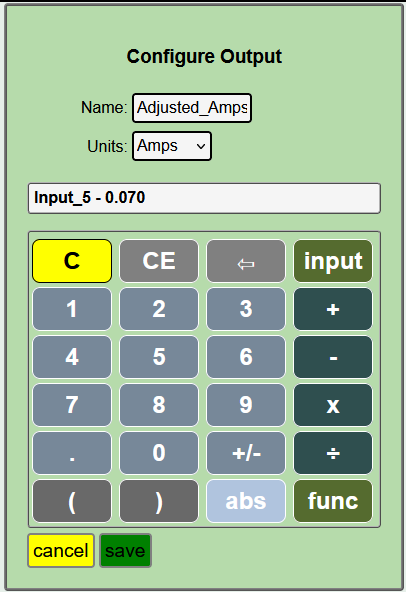New here, just purchased iotawatt - and it’s great!
I notice when a circuit breaker is OFF, there is still a current reported. Doesn’t change when the corresponding 3.5mm jack is completely unplugged, so it’s internally generated within the iotawatt unit. This applies to any port, and is proportional to the CT device current selected in the input. Ie. For a ECS24200 200A, the offset current is 0.27amperes, for the ECS1050, it is 0.07 amperes. As a result of these non-zero currents when the the circuits are dead, the displayed VA (reactive) power is 10’s of watts, even though the real power reported is correct - 0 watts. Is there a way to correct for these offsets to set them to 0.0 ? I realize most people look at watts, but I like to look at amperes, and the non-zero offset bothers me. Is it the inherent capacitance of the A/D input circuit that results in this reactive base level current?
Thank you,
Boris
Your basic offset of 70mA , on both ADCs, looks like the bias voltage is not exactly half of the ADC reference voltage. The bias voltage is produced with a pair of 0.1% resistors, so the bias can be off +/- 0.1%.
When the bias is a little off, it shows up in the Amps metric because it is RMS. Watts are a signed calculation so a slight bias offset has little effect because it gets added in half of the AC cycle and subtracted in the other half.
Your 270mA for 200A calibration is the same as 70mA for a 50A calibration. It’s the same sensed bias scaled up x4.
IoTaWatt is an energy monitor, not a meter. The design attempts to deliver Watts and Watt-hours to 1% accuracy with the 0.5% CTs. (The Echuns you have are probably 1%). Additional metrics like Amps, VA and VAR are available as a by-product.
If you want to normalize the Amps to zero, you can create an output that subtracts the 70mA (or .27 in the case of the 200A calibration).
Thank you for the great explanation. I did try the subtraction earlier, but then for non-zero currents, the current reading will be a bit low. I feel like adding a high value trim pot (2Mohm) across one of the dividers 4.7K R1 (or 4.7K R2), and tweak until the 0.1% error is nulled out - I’ll only be measuring low current draws on one particular CT port, so nulling for that particular one should do it for my application.
